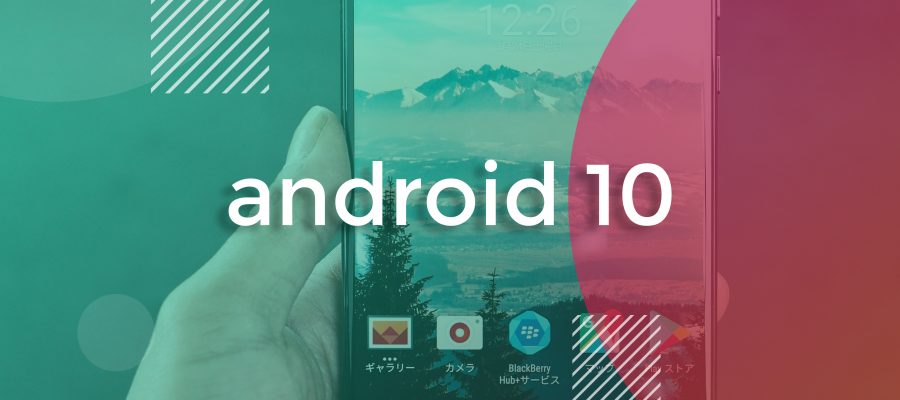Android 10 is the tenth major release and the 17th version of the Android mobile operating system. It was released on September 3, 2019.
Android 10 introduces a revamped full-screen gesture system, with gestures such as swiping from either side edge of the display to go back, swiping up to go to the home screen, swiping up and holding to access Overview, swiping diagonally from a bottom corner of the screen to activate the Google Assistant, and swiping along the gesture bar at the bottom of the screen to switch apps. The use of an edge swiping gesture as a “Back” command was noted as potentially causing conflicts with apps that utilize sidebar menus and other functions accessible by swiping. An API can be used by apps to opt out of handling a back gesture within specific areas of the screen, a sensitivity control was added for adjusting the size of the target area to activate the gesture, and Google later stated that the drawer widget would support being “peeked” by long-pressing near the edge of the screen, and then swiped open. OEMs are required to support the aforementioned core gestures, but are free to add their own gestures alongside them. The traditional three-key navigation system used since Android “Honeycomb” remains supported.
A feature known as “bubbles” can be used to present content from supported apps in pop-up overlays (similarly to the overlay-based “chat heads” feature of Facebook Messenger). Apps can spawn bubbles via notifications. Example use cases for the feature include chat and messaging apps, reminders, and “ongoing tasks and updates”. Bubbles is designed to replace the existing overlay permission, which is being deprecated due to security (due to its use by click-jacking malware) and performance concerns. Side-loaded apps will automatically lose their overlay permission after 30 seconds, and apps from Play Store will lose their overlay permission each time the device is rebooted. Android 10 Go Edition forbids use of overlay permissions entirely.
Android 10 includes a system-level dark theme. Third-party apps can automatically engage a dark theme when this mode is active.
Apps can also present “settings panels” for specific settings (such as, for example, internet connection and Wi-Fi settings if an app requires internet) via overlay panels, so that the user does not have to be taken outside of the app in order to configure them.
Several major security and privacy changes are present in Android 10: apps can be restricted by users to only having access to location data when they are actively being used in the foreground. There are also new restrictions on the launching of activities by background apps.
In February 2019, Google unveiled Adiantum, an encryption cipher designed primarily for use on devices that do not have hardware-accelerated support for the Advanced Encryption Standard (AES), such as low-end devices. Google stated that this cipher was five times faster than AES-256-XTS on an ARM Cortex-A7 CPU. Therefore, device encryption is now mandatory on all Android 10 devices, regardless of specifications, using Adiantum if their CPU is not capable of hardware-accelerated AES. In addition, implementation of “file-based encryption” (first introduced in Android Nougat) is also mandatory for all devices.
On devices shipping with Android 10, security patches for selected system components (such as ANGLE, Conscrypt, media frameworks, networking components, and others) may be serviced via Google Play Store, without requiring a complete system update (“Project Mainline”). In order to license Google mobile services, manufacturers must support these updates for specific modules, while the remainder are marked as “recommended” but optional. Selected modules within this system use the new APEX package format, a variation of APK files designed for housing and servicing low-level system components.
A major change to storage access permissions known as “Scoped storage” is supported on Android 10, and will become mandatory for all apps beginning with Android 11. Apps are only allowed to access files in external storage that they had created themselves (preferably contained within an app-specific directory), and audio, image, and video files contained within the Music, Pictures, or Videos directories. Any other file may only be accessed via user intervention through the Storage Access Framework.
Apps must have a new “read privileged phone state” permission in order to read non-resettable device identifiers, such as IMEI number.
Platform optimizations have been made for foldable smartphones, including app continuity when changing modes, changes to multi-window mode to allow all apps to run simultaneously (rather than only the actively-used app running, and all others being considered “paused”), and additional support for multiple displays.
“Direct Share” has been succeeded by “sharing shortcuts”. As before, it allows apps to return lists of direct targets for sharing (such as a combination of an app and a specific contact) for use within share menus. Unlike Direct Share, apps publish their targets in advance and do not have to be polled at runtime, improving performance.
Native support has been added for MIDI controllers, the AV1 video codec, the Opus audio codec, and HDR10+. There is also a new standard API for retrieving depth information from camera photos, which can be used for more advanced effects.
Android 10 supports WPA3 encryption protocol and Enhanced Open, which introduce opportunistic encryption for Wi-Fi. Android 10 adds support for Dual-SIM dual-standby (DSDS), but is initially only available on the Pixel 3a and Pixel 3a XL.
The above is a brief about Android 10. Watch this space for more updates on the latest trends in Technology.
